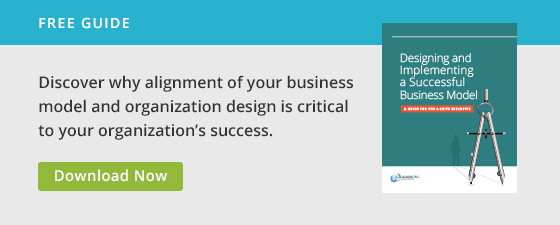Resource availability is one of the built-in challenges of managing organizational change. For successful change transformation to occur, leaders and teams must learn to work effectively within the constraints of resource limitations.
Limiting resources vary from one organization to the next, but the scarcest resource of all for many is time. Time allocation is thus a prevailing challenge for those wishing to implement organizational change. However, it is one which we believe is well worth prioritizing.
Just as physical infrastructure improvements require an upfront financial investment, it takes an investment in time to create effective change transformation. The amount of time invested must be weighed against desired outcome. Typically, you get what you pay for. The most successful organizational change occurs when leaders and teams make and prioritize time for planning, designing and implementing.
How to Implement Organization Change Without Losing Time
Over the years, we have noted that the best organizational decision making is made in face-to-face dialog with other leaders and team members. We do a lot of work in sessions where we bring a group together in order to work through our questions and processes in person. The reason for this is that to make good decisions about how to align an organization you have to weigh options. It’s like trying to solve a Rubik’s cube: you can turn it any number of different ways. Which is the right way? There are only a few that will actually help you solve it. Without knowing the definitive answer, you have to allow time to play through various scenarios. Working business and strategy scenarios out dynamically as a leadership team in real time facilitates decision making in a dynamic and concentrated fashion that helps ensure alignment in thinking between various individuals and levels of the organization.
Yes, it takes time. But it’s time well spent, for these reasons:
- Leveraging multi-dimensional perspectives. Decisions made in isolation are rarely sound. You make the best choices when you can discuss choices and their consequences with dynamic feedback and input from many different viewpoints.
- “Pay me now or pay me later.” Implementation is more difficult downstream of a significant organizational change if people don’t understand the rationale for why it’s happening, how it brings value, and how it’s going to work. Having to communicate, convince, or change-manage people after the fact takes far more time than it does to achieve buy-in and implement change through aligning ideas, mindsets and expectations up front. We find that when enough time is allotted to develop clarity in the beginning stages of the change implementation process, there are fewer fits and starts and fewer opt-outs by people challenging or questioning the decisions that are being rolled out. Properly invested time up front speeds implementation in the long run.
- Taking the pain out of compromise. Negotiating strategic trade-offs is one of the most difficult tasks any organization leader must face. Choosing to forgo something or having to prioritize one thing over another can be painful enough, but when it elicits opposition within the organization it can adversely affect both morale and profits. Having leadership or organizational alignment around compromises empowers the organization to take timely action on necessary trade-offs.
- Owning your leadership. It is both the prerogative and the duty of C-suite leadership to make the transformational decisions necessary to further the best interests of the organization and/or the industry of which it is a part. The strategic decision making that happens in an organization work session is part of that role. Referring again to the “pay me now or pay me later” concept, if that work is not prioritized by leadership, it typically gets relegated to somebody lower down in the organization—who will not have the expertise, training, knowledge or authority to do it in perfect alignment with where you’d like to see the organization go.
Time is a very democratic resource. No one leader or organization ever has any more or less time to work with than any other. How you choose to prioritize the time you do have is what will ultimately define your legacy as a leader in your organization. It is also what will set your organization apart in the strategic race against competitors. Time is money—will you spend the time it takes to do it right the first time? And, will you spend it in the right ways?






